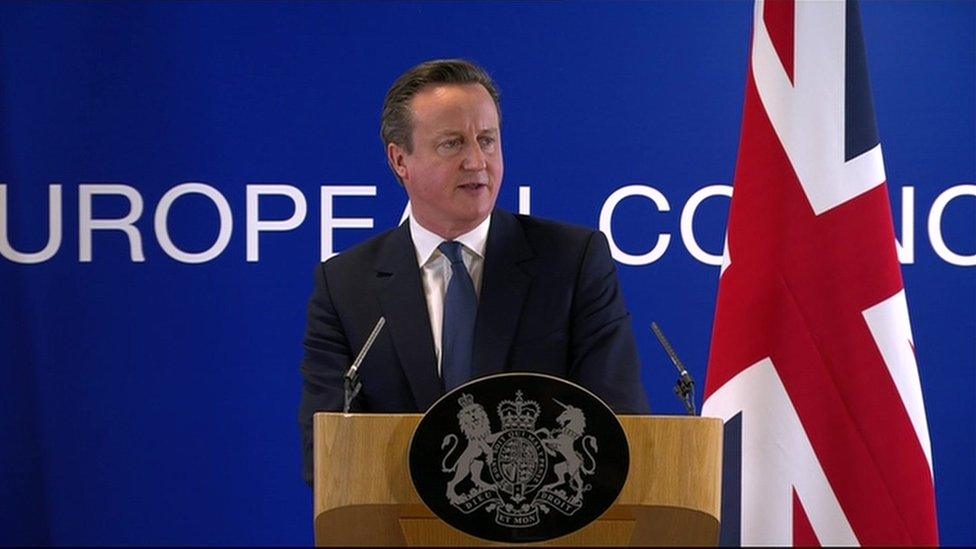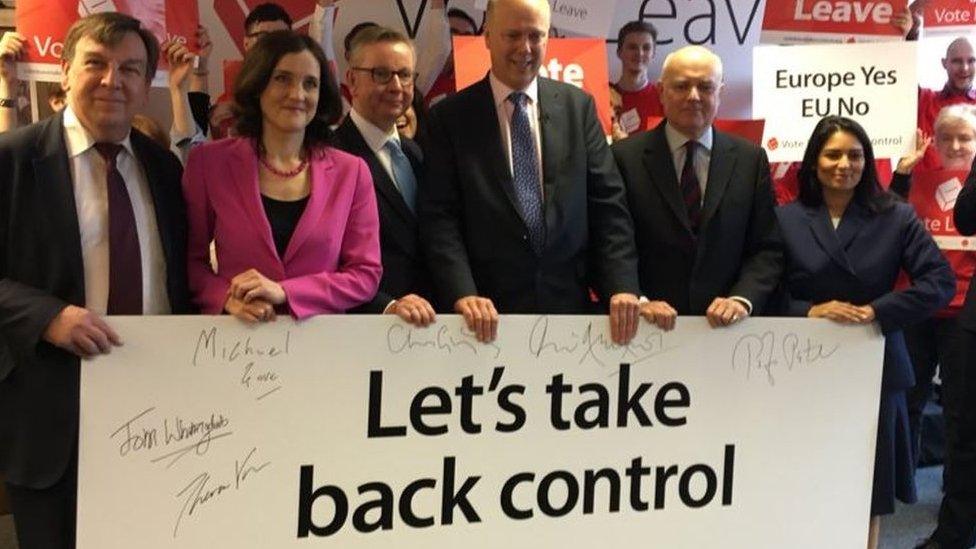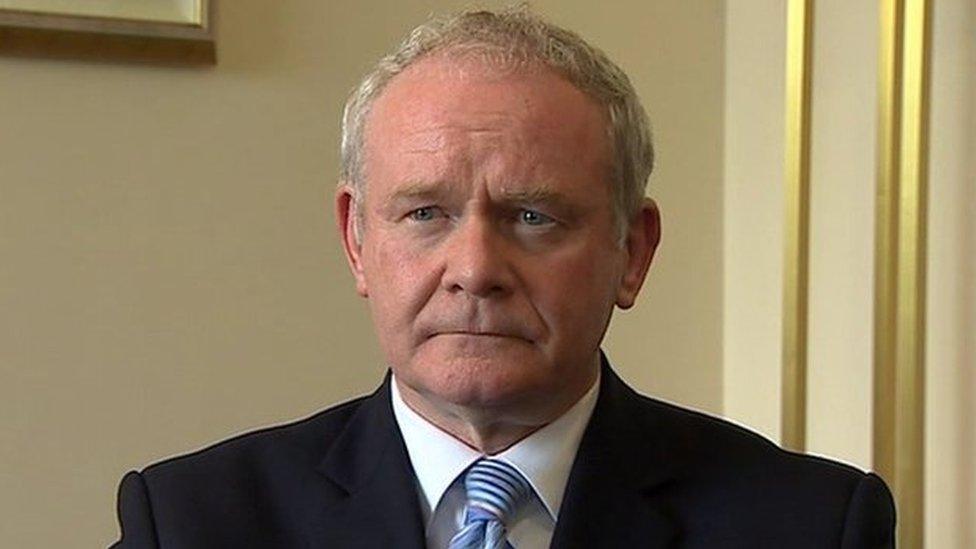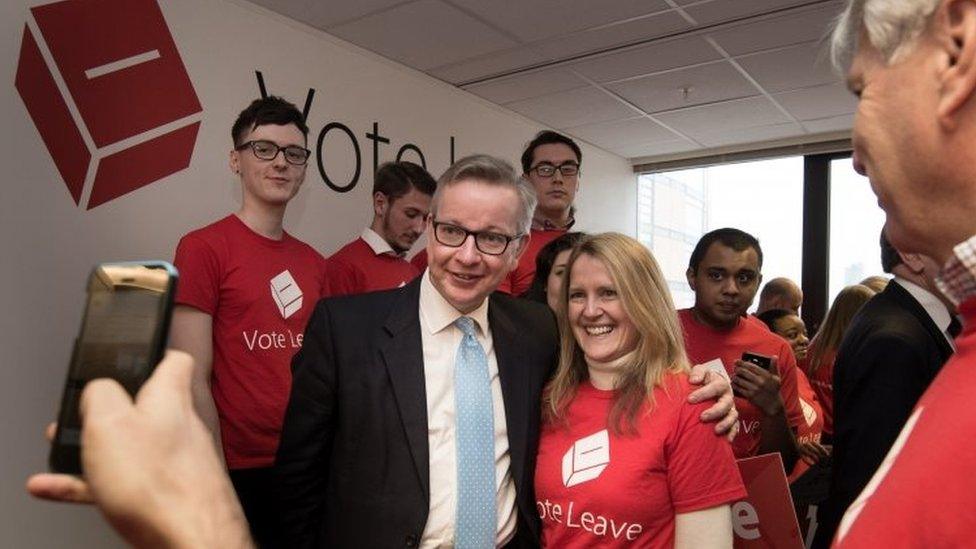Northern Ireland Assembly and Brexit campaign issues overlap
- Published

David Cameron has brushed aside objections from Stormont, Edinburgh and Cardiff and pushed ahead with the EU referendum seven weeks after the devolved elections.
The prime minister insists that voters will be able to focus on their local issues and familiar parties before turning their minds to "remain" or "leave".
But it is already clear the two campaigns will overlap to some extent.
We've already hit one grey area with the controversy over whether Theresa Villiers should resign.
Was she responding to Martin McGuinness's call for her to step down in her official capacity as a government minister, or in her private role as a pro-Brexit campaigner?

Theresa Villiers is one of five ministers who have declared their intention to join the "Leave" camp
Was he making his comments as deputy first minister or as a pro-EU advocate?
If you want an example of another issue likely to cut across both the EU and Stormont campaigns, take the commitment to reduce Northern Ireland's rate of corporation tax to match the level in the Republic of Ireland.
Proponents believe this will create much needed jobs, while opponents think it is unaffordable as it must be paid for due to a corresponding cut in Northern Ireland's grant from the Treasury.
The policy will feature strongly when First Minister Arlene Foster makes her first joint St Patrick's Day visit to the United States with deputy first minister Mr McGuinness next month.

Martin McGuinness said there had been "enormous benefits" for Northern Ireland's community and voluntary sectors, farmers and the business community
As a centrepiece of last year's Fresh Start Deal, it will undoubtedly form part of the debate as the Stormont campaign gains momentum in April.
However, as the DUP's Nigel Dodds pointed out earlier this week, the parameters within which the Northern Ireland Executive is able to handle corporation tax are set by a ruling from the European Court of Justice.
The Azores ruling defines a regional reduction in corporation tax as a form of state aid which must be paid for by a corresponding cut in a region's funding.
Those in favour of withdrawing from the EU may well point out that, if the UK leaves, London could gift Stormont a regional cut without deducting hundreds of millions of pounds from the block grant.
Those on the other side of the debate may counter that no-one is in a position to guarantee this would happen in a post-EU UK, in which a discrepancy in corporation tax rates might not be the only cross-border issue which needs to be addressed
Away from the overlapping issues, it should be fascinating to see what captures the Northern Ireland public's attention the most, the traditional Stormont battleground or the referendum - a once in 40 years decision?

Michael Gove is another government minister who has signed up to the leave campaign
When government minister Michael Gove signed up to the leave campaign he argued that "the public must have the right to change laws and governments at election time".
Those familiar with TUV leader Jim Allister's criticism of the Stormont mandatory coalition may recognise those sentiments.
You don't have to agree with Mr Allister's analysis to recognise that Stormont elections have tended to return similar combinations of parties every time, albeit with variations at the edges.
Moreover, the proportional handout of departments makes it hard for any voter to be certain that his or her views on, say, education or health, will be reflected in the approach of whoever takes the relevant ministry.
So will the Northern Ireland public be more enthused by the direct decision they will make in the June referendum, or the rather more cumbersome exercise in democracy due to take place in early May?
Turnout in Stormont elections has been falling since 1998 (it was 56% in 2011).
But the experience of both the Good Friday Agreement referendum and the Scottish independence vote, when more than 80% of voters turned out, shows that if people believe they have a clear choice to make on a matter of real importance, they don't need too much persuading to go to their polling station.